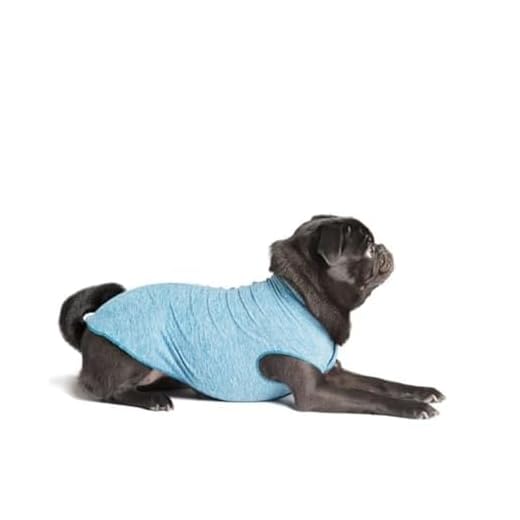




Applying a protective layer to your furry friend’s skin is a smart move, especially during those hot summer days. Many breeds, particularly those with short hair or light-coloured fur, are susceptible to sunburn. Sunburn not only causes discomfort but can also lead to more severe skin issues, making preventative measures crucial.
When selecting a suitable product for your pet, look for formulations specifically designed for animals. Human sunscreen may contain harmful ingredients that could irritate their skin or be toxic if ingested. Always opt for a product that is free from zinc oxide and para-aminobenzoic acid (PABA), as these compounds can pose serious health risks.
Apply the solution to areas most at risk, such as the nose, tips of the ears, and belly. Reapplication is necessary, particularly after swimming or if your pet has been rolling in the grass. Keeping your companion hydrated and providing shade during peak sun hours are also key components of sun safety.
Monitoring your pet for signs of overexposure, such as excessive panting or lethargy, is vital. If you notice any unusual behaviour or skin irritation, consult a veterinarian promptly. Taking these precautions ensures your beloved companion can enjoy the great outdoors without the threat of sun damage.
Protecting Your Canine Companion from Sun Damage
Whenever the sun shines brightly, I often think about the importance of safeguarding my furry friend’s skin. While their fur offers some protection, certain breeds with lighter coats or hairless varieties are more susceptible to sunburn. It’s wise to consider applying a protective layer to those vulnerable areas, such as the nose, ears, and belly.
When selecting a product, ensure it’s specifically formulated for pets. Human products may contain harmful ingredients that can irritate their skin or, worse, be toxic if ingested. Look for options that are free from zinc oxide and parabens, as these can be harmful to our four-legged companions.
Here’s a quick reference table for choosing an appropriate protection method:
| Type | Notes |
|---|---|
| Pet-Safe Sunscreen | Look for natural ingredients; check for vet recommendations. |
| Protective Clothing | UV-blocking shirts can provide added coverage. |
| Shade | Providing a shaded area during peak sun hours is beneficial. |
| Hydration | Always ensure plenty of water is available to prevent overheating. |
After a long day at the park, I always check my pup for any signs of discomfort. If you notice redness or irritation, consult a vet immediately. Regular monitoring after outdoor activities can make a significant difference in your pet’s well-being. In my experience, a little precaution goes a long way in keeping my companion happy and healthy under the sun.
Understanding the Risks of Sun Exposure for Pets
It’s crucial to acknowledge the potential dangers associated with prolonged exposure to sunlight. Pets, particularly those with lighter fur or exposed skin, face a heightened risk of sunburn and skin damage. Here are some specific concerns to consider:
Skin Conditions
- Sunburn can lead to painful skin irritations, much like in humans.
- Repeated exposure may increase the likelihood of developing skin cancer, especially in breeds with thin coats.
- Areas with less fur, such as the nose, ears, and belly, are particularly vulnerable.
Heat-Related Issues
- Overheating can occur quickly; pets lack the same cooling mechanisms as humans.
- Watch for signs of distress, like excessive panting, drooling, or lethargy.
- Always ensure access to shade and fresh water during sunny outings.
Being proactive can significantly reduce these risks. Regular check-ups with a vet can help monitor skin health and overall well-being. Adjusting daily routines to avoid peak sunlight hours is also beneficial. By taking these precautions, you can enjoy sunny days without worry.
Identifying Breeds That Are Most Vulnerable to Sunburn
Short-haired and light-coloured breeds are at a higher risk for sunburn. Breeds like the Whippet, Dalmatian, and Boxer often have minimal fur protection, exposing their skin to harmful UV rays. If your companion belongs to these categories, be vigilant during sunny days.
Specific Breeds to Watch
Greyhounds and Staffordshire Bull Terriers also have thin coats, making them susceptible to skin damage. The exposed areas, particularly the nose and ears, require special attention. It’s wise to keep them shaded during peak sun hours.
Skin Type Considerations
Some breeds have naturally sensitive skin, such as the Chinese Crested and the American Staffordshire Terrier. These breeds can burn easily, even on cloudy days. Regular checks for redness or irritation after sun exposure can help catch potential issues early, ensuring your furry friend stays comfortable and healthy.
For all breeds, regardless of coat thickness, keeping an eye on sun exposure remains crucial. If you notice any signs of discomfort or irritation, consult a veterinarian for tailored advice.
Choosing the Right Type of Sunblock for Your Dog
For optimal protection, select a sun protection product specifically formulated for canines. Human sunscreens often contain harmful ingredients, such as zinc oxide and PABA, which can be toxic if ingested. Look for options that are free from these substances. Instead, focus on those that include natural ingredients like aloe vera, coconut oil, or shea butter, as these are safer and provide moisture while protecting the skin.
Application Tips
Before applying any product, ensure the skin is clean and dry. Use a small amount, rubbing it into areas most susceptible to UV rays, such as the nose, ears, and belly. Reapply every few hours, especially if your pet has been swimming or rolling in the grass. Using a best body scrubber tool can help ensure an even application, making the process easier and more effective.
Consult Your Vet
Always consult with a veterinarian before introducing any new products to your canine’s routine. They can recommend brands they trust and help you determine the best frequency for application based on your pet’s lifestyle and skin type. Regular check-ups can also identify any skin sensitivities that may require special consideration.
Proper Application Techniques for Canine Sunblock
Before applying any product, ensure the area is clean and dry. Use a gentle cleanser to remove dirt or oils that might hinder adherence. Apply a small amount of cream or spray evenly over exposed areas, such as the nose, ears, and belly. Avoid using too much, as it can create a greasy layer that may irritate the skin.
For creams, use your fingers to gently massage the product into the skin. This not only ensures even coverage but also helps the product absorb better. If using a spray, hold the bottle at least six inches away from the skin to prevent oversaturation. Always spray from multiple angles to cover all exposed skin.
Wait a few minutes before allowing your companion to run around. This gives the product time to settle. If you notice your pet trying to lick the area, consider using an Elizabethan collar or a light fabric cover to prevent ingestion.
Reapply every two hours, especially after swimming or vigorous play. Keep an eye on how your pet reacts to the product; if you notice any signs of irritation or discomfort, discontinue use immediately.
For more insights on pet care, check out this link: who owns eukanuba dog food.
Signs of Sunburn in Canines and When to Seek Veterinary Help
Observe closely for signs of skin irritation, including redness, inflammation, or peeling in areas with less fur, such as the nose, ears, and belly. If you notice your furry friend licking or scratching these areas excessively, it could indicate discomfort from sun exposure.
Recognising Symptoms
Sunburn may manifest as dry, flaky skin or lesions. Watch for increased sensitivity in your pet; if they flinch when touched or seem restless, it might be time to consult a veterinary professional. Severe cases can lead to blistering or open wounds, signalling an urgent need for medical attention.
When to Contact a Vet
If any of the signs persist for more than a couple of days or if your companion exhibits signs of distress such as lethargy, loss of appetite, or vomiting, seek immediate veterinary care. Quick intervention can prevent further complications and ensure your pet’s comfort.
FAQ:
Do dogs really need sunblock?
Yes, dogs can benefit from sunblock, especially those with short fur or light-coloured skin. Dogs that spend a lot of time outdoors in sunny conditions are more susceptible to sunburn, particularly on areas like the nose, ears, and belly. Certain breeds, such as the Dalmatian and Whippet, are more prone to sunburn due to their thin coats. Therefore, applying sunblock designed for pets can help protect their skin from harmful UV rays.
How do I choose the right sunblock for my dog?
When selecting a sunblock for your dog, it’s important to choose a product specifically formulated for pets. Human sunscreens can contain ingredients that are toxic to dogs, such as zinc oxide and para-aminobenzoic acid (PABA). Look for sunblocks that are labelled as safe for pets, and ideally, use a product that is non-toxic and waterproof. Consult with your veterinarian if you have questions about specific brands or ingredients.
When should I apply sunblock on my dog?
It’s best to apply sunblock about 15 to 30 minutes before your dog is exposed to sunlight. This allows the product to absorb and provide optimal protection. Reapplication may be necessary, especially if your dog is swimming or sweating, so keep an eye on the time spent in the sun. In general, consider applying sunblock during peak sun hours, typically between 10 am and 4 pm, when UV rays are strongest.
What are the signs that my dog might have a sunburn?
Signs of sunburn in dogs can include redness or inflammation of the skin, particularly in areas with less fur. You might also notice your dog showing discomfort, such as licking or scratching the affected areas. In more severe cases, blisters or peeling skin can occur. If you suspect your dog has a sunburn, it is advisable to consult your veterinarian for proper care and treatment.








